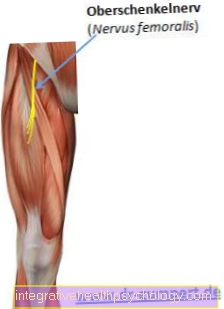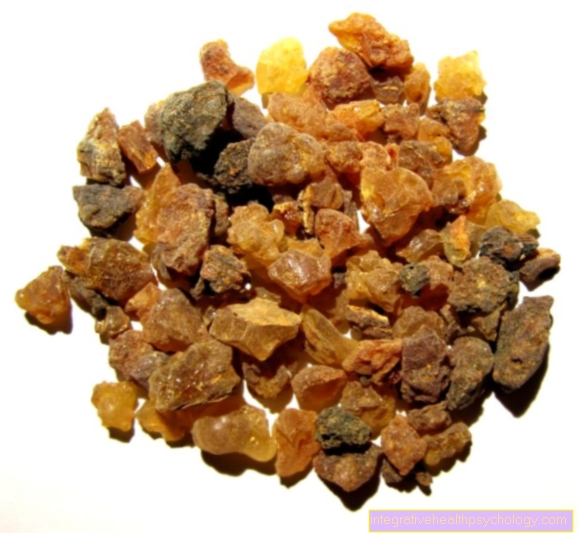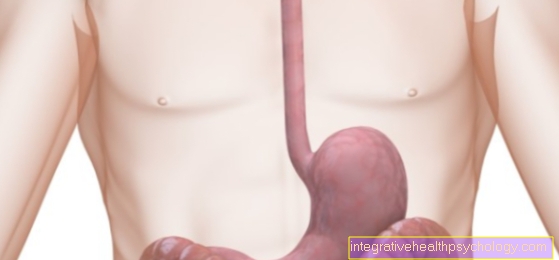Wick Vaporub®
introduction
Wick Vaporub® products are often used for colds. According to some authors, it is the best-selling preparation compared to other preparations of its kind.
The most famous Wick Vaporub® product is the cold ointment. But there are also other products for inhalation and a Wick Vapospray®, an isotonic spray with sea salt for nasal rinsing.
Used correctly, these preparations can provide relief for certain ailments. Nevertheless, it is useful to have a little knowledge of how to use it to avoid side effects and complications.

Indications for Wick Vaporup®
According to the manufacturer, Wick Vaporub® is recommended for bronchitis, hoarseness, colds with cough, sore throat and runny nose.
The application and indication areas of Wick Vaporub® are controversial among experts. Some authors even advise against it. Other authors can definitely find supportive effects in the healing process of colds. The indication recommended by the manufacturer can make sense under certain conditions.
The common cold must be acute and mild to moderate. Wick Vaporub® is indicated if the symptoms subside within a few days.
The colds indicated refer to children over 2 years of age or children and adults without chronic respiratory diseases.
Wick Vaporub® may be indicated in the case of hoarseness if it is mild and a result of a mild to moderate cold.
Active ingredient and effect of Wick Vaporub®
Wick Vaporub® preparations contain an active ingredient combination of so-called essential oils. This means that the oils evaporate completely.
Wick Vaporub® contains eucalyptus oil, menthol and turpentine oil. It also contains synthetically produced camphor.
These ingredients are usually 1-5% in cold ointments. It also contains 85% Vaseline.
The main active ingredients of the essential oils are used to treat colds. It is believed that this hoarseness, coughing, runny nose and pain and mucus in the airways can counteract.
According to the manufacturer, the active ingredients in Wick Vaporub® can support the healing processes of inflammation in the throat and bronchi. It is assumed that the eucalyptus oil acts on certain cellular docking points, so-called receptors, on the mucous membrane surface of the bronchi. It is believed that this would lead to improved mucus loosening.
According to the manufacturer, camphor also influences certain docking points of the respiratory muscles. It is said that it has a slightly stimulating effect on the respiratory muscles and thereby promotes deeper breathing.
On the other hand, menthol oil may have an effect on the nasal mucous membrane. It activates certain docking points here, the so-called TRPM8 receptors. These react to the cold. Menthol can fake this stimulus. In some cases this can be perceived as pleasant.
It is also assumed that terpetine oil serves to protect against germs.
Side effect of Wick Vaporub®
Like other drugs, Wick Vaporub® can cause undesirable effects. These do not necessarily have to occur.
A particularly serious and serious side effect observed is that in infants and young children up to 2 years of age.
Larynx cramps and life-threatening breathing disorders could be recorded here.
In addition, it is possible at any age that allergic reactions occur on the skin. These show up in redness or irritation or in so-called contact allergies.
Coughing or shortness of breath have been observed in some cases after inhaling the active ingredient combination.
Experts do not agree on the frequency of side effects. If these side effects occur during use, the preparations should be avoided. A doctor should be consulted.
Interaction of Wick Vaporub®
No interactions are known to date. However, interactions cannot be ruled out.
It is recommended that you inform your doctor or pharmacist if you are currently or recently taking other medicines.
Contraindications to Wick Vaporub®
Wick Vaporub® is contraindicated if there are known allergies to any of the ingredients.
Wick Vaporub® is not recommended for people with certain respiratory diseases, such as so-called bronchial asthma. Inhaling the combination of active ingredients can trigger an asthma attack and in extreme cases even life-threatening shortness of breath.
The Wick Vaporub® preparations are contraindicated for babies and toddlers under 2 years of age. Children under 6 years of age are not allowed to inhale the preparations.
In general, only external use is indicated. Use on the face is contraindicated. The use of the cold ointment on injured, burned or inflamed skin, on mucous membranes or on open wounds should be avoided at all costs.
In addition, the ointment should not be used on skin rashes, for example in the context of skin diseases or childhood diseases. In addition, Wick Vapurub® is not suitable for whooping cough, pneumonia and the so-called pseudo croup, as well as for those who tend to have glottic cramps.
Wick Vapurub® cold ointment
Wick Vapurub® cold ointment is the best known and most widely used of the preparations.
The 100 g Wick Vapurub cold ointment usually contains 5.0 g camphor, 1.5 g eucalyptus oil, 2.75 g levomenthol and 5.0 g turpentine oil. In addition, other components are the essential juniper wood oil, white vaseline and thymol.
The ointments are available in 25 g, 50 g and 100 g packs. Sometimes there are special sizes.
The ointment is rubbed onto the chest, neck and back as desired. This application corresponds to a so-called cold inhalation. The active ingredients in the ointment evaporate through the body heat and are inhaled through inhalation. The manufacturer assumes that they have a soothing effect right down to the bronchi.
The cold ointment should be used properly and not rubbed under a tight bandage, for example. In addition, the simultaneous use of a hot water bottle, a heat pad or any other type of heat treatment is prohibited.
More information can be found here: Wick VapoRub® cold ointment
Dosage of Wick Vaporub® cold ointment
As a rule, it is recommended to carefully rub Wick Vaporub® cold ointment onto the chest and back 2 to 4 times a day. The amount of ointment to be rubbed in depends on age.
For children aged 2-5, half a teaspoon to a maximum of one teaspoon of the cold ointment should be used. 1-2 teaspoons are recommended for children aged 6-12.
Adults should take around 2-3 teaspoons of the ointment.
For very sensitive people, a lower dosage may be sufficient.
Inhaling Wick Vaporub® cold ointment
A distinction is made between hot and cold inhalation.
The classic cold ointment from Wick Vapurub® is "cold inhaled" when rubbed onto the neck, chest and back.
As an alternative to this type of cold inhalation, there is also a separate inhalation stick. This stick can be used at any time on the go by holding it to your nose for a few seconds.
It is also possible to use Wick Vaporub® cold ointment as a warm inhalation solution. For this you need the ointment, water, a pot or a heat-stable bowl with a large diameter and a towel.
For inhalation, 0.5 liters of hot water are poured over 1 - 2 teaspoons of Wick Vapurub® for children from 6 years of age and adults.
As a rule, the vapors should then be inhaled for 10-15 minutes. A repetition several times a day is often advisable.
It is important to follow the general recommendations for inhalation. For example, continuing to breathe at a normal rate. Breathing too deeply or too quickly when inhaling can cause dizziness or headaches.
Furthermore, everything should always happen in your own comfort area. Specifically, this means, depending on your individual feelings, to air the towel in between if it is no longer bearable under it. The water (steam) temperature should also be selected individually.
Conditionally simple inhalers can also be used instead of the bowl. However, attention should be paid to the dosage. Often a fraction of the ointment is enough.
Nebulizers pose the risk of irritating the mucous membranes and should therefore not be used.
Price from Wick Vaporub®
The price of Wick Vapurub® products can range between € 4.10 and € 16.43. There are also price outliers. This usually affects certain special products or special promotions.
Often the preparations are then offered in otherwise unusual amounts of content.
What should be considered and when is Wick Vaporub® used?
In any case, the information on the package insert must be observed.
Wick Vaporub® cold ointment must not be swallowed.
Contact with eyes, nose and mouth should be avoided.
After rubbing in the ointment, hands should be washed very thoroughly.
If the symptoms have not subsided after 5 days or have even worsened, it is advisable to consult a doctor.
In the event of incorrect or overdosing, the ointment should be removed with baby oil towels or paper towels soaked in cooking oil. If skin reactions, breathing problems or other complaints occur due to incorrect or overdosing, a doctor should be consulted.
In the case of shortness of breath or a purulent, bloody cough or nasal mucus after using the ointment, it is essential to consult a doctor.
In addition, the doctor should be contacted immediately if the Wick Vapurub® ointment has been swallowed. No attempt should be made to induce vomiting. At best, Wick Vapurub® preparations should be stored out of the reach of children and persons who are at risk.
If you are unsure for other reasons, you should always contact a doctor. Whether Wick Vaporub® has an impact on the ability to drive or use machines has not yet been adequately investigated.
Use in babies and children
Wick Vaporub® cold ointments are contraindicated in children under two years of age. This also applies to similar preparations such as the cold balm from Grippostad®, the Pulmotin® cold ointment, the cold balm Tumarol® or the ointment from Metholan Orginal®.
This is due to the combination of active ingredients in the preparations, which can lead to severe shortness of breath in babies and small children. Animal experiments have shown that Wick Vaporub® causes increased slime formation. In addition, the combination of active ingredients disrupts the removal of mucus and thus blocks the airways.
Under certain circumstances, this can lead to a risk of breathing problems at any age. However, this risk is particularly high in infants and young children.
Wick Vaporub® during pregnancy
The effect of Wick Vaporub® has not yet been adequately investigated during pregnancy and breastfeeding.
Therefore it is not recommended to use it.
If a pregnancy is suspected or a pregnancy has already been proven, a doctor or pharmacist should be consulted.
The same goes for breastfeeding. In this case, the Wick Vaporub® cold ointment must not be used on the mother's chest. There is a risk that the baby will have a laryngeal spasm while suckling.




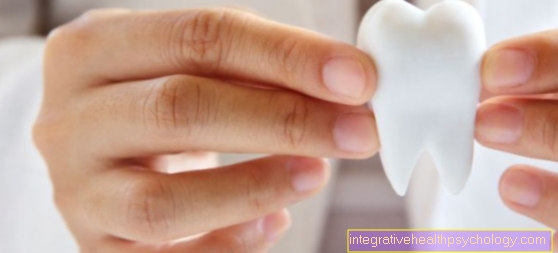


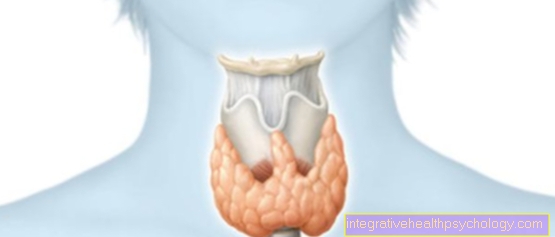





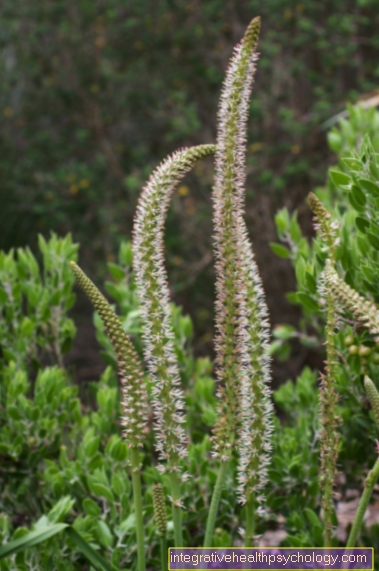


.jpg)




